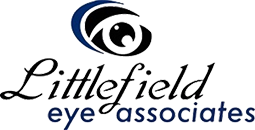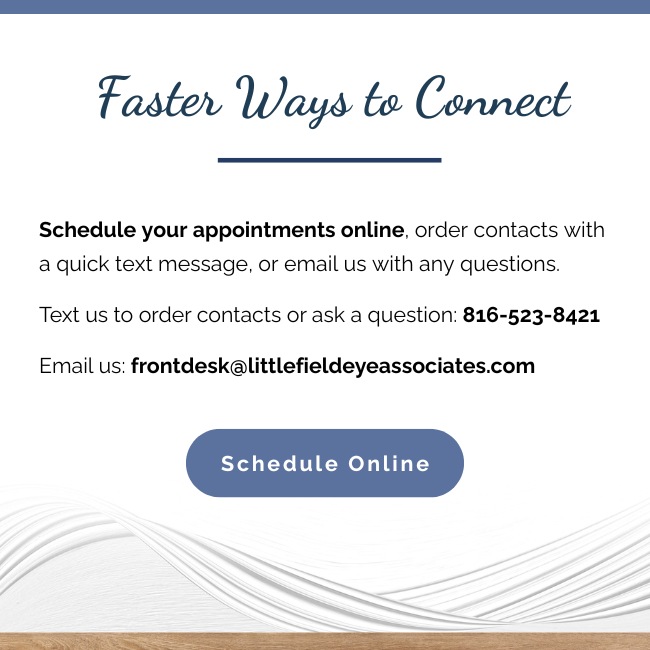For anyone who switches between glasses and contact lenses, it can be confusing to understand why 2 prescriptions are needed. Are they interchangeable? Can you use your glasses prescription to order new contacts? The short answer is no, contact lens prescriptions and glasses prescriptions are not the same.
Why does this matter? Contact lenses have direct contact with the surface of your eye, while glasses sit further away. This difference in position might seem minor, but it has a significant impact on your visual clarity.
Key Differences Between Contact & Glasses Prescriptions
The main difference between a contact lens prescription and a glasses prescription comes down to fit and functionality.
A glasses prescription only considers the correction your eyes need to focus light properly when wearing lenses positioned slightly away from your eyes. By contrast, a contact lens prescription includes measurements that ensure the lenses fit snugly and safely on the surface of your eyes.
A Closer Look at Your Contact Lens Prescription
A contact lens prescription provides detailed measurements that cater to the unique shape and surface of your eye. It allows your lenses to correct your vision while also fitting comfortably and securely.
Here’s what you’ll typically find in a contact lens prescription:
- Power (SPH): Corrects nearsightedness or farsightedness.
- Base curve (BC): Reflects the curvature of the contact lens to match the curve of your cornea.
- Diameter (DIA): Determines the width of the lens to fit your eye’s surface properly.
- Lens material or brand: Lens material needs to be compatible with your eye’s tolerance for oxygen flow and moisture.
- Cylinder (CYL) & axis: These measurements are included if you need toric lenses to correct astigmatism.
- Add power (ADD): Required for multifocal or bifocal contacts to address presbyopia.
Without these specifications, your contact lenses might not fit well, leading to potential discomfort or even eye health complications.
Why Fit Is Essential for Contact Lenses
Contact lenses sit directly on the eye, making a precise fit crucial. Ill-fitting contact lenses can cause various issues, such as:
- A tight-fitting lens may reduce oxygen flow, leading to eye redness, irritation, or more severe complications such as corneal damage.
- A loose-fitting lens can shift or move around, causing blurry vision or discomfort.
Your optometrist carefully evaluates the fit of your lenses during a contact lens fitting to minimize these risks and help you enjoy clear, irritation-free vision.
What’s in a Glasses Prescription?
Glasses prescriptions, on the other hand, provide the information needed to correct your vision without accounting for any direct physical contact with your eye.
Here’s what they typically include:
- Power (SPH): Corrects nearsightedness or farsightedness, just like in contact lenses.
- Cylinder (CYL) & axis: For correcting astigmatism.
- Prism: Sometimes included to help correct eye alignment issues.
- Pupillary distance (PD): Measures where the optical center of your glasses lenses align with your pupils.
Since glasses sit away from your eyes, they don’t require measurements such as base curve or diameter.
Why You Need a Separate Exam for Contacts
A glasses prescription alone doesn’t give you enough information to safely wear contact lenses. Contact lens exams include additional testing to fit the lenses to your eye’s shape and help ensure they don’t compromise eye health.
Here’s what happens during a contact lens exam:
- Corneal measurements: These map the shape of your cornea to determine the best lens fit.
- Tear film evaluation: Checks that your eyes produce enough moisture for comfortable all-day wear. If not, you may need to treat your dry eye before wearing contact lenses.
- Trial lenses: You’ll receive a trial pair to test for fit, clarity, and comfort in real-life conditions.
- Prescription finalization: Once we’ve determined your perfect lens type and fit, you can get your final contact lens prescription.
This crucial step helps you avoid discomfort, blurry vision, and even an increased risk of eye infections from improper contact lenses.
Are Contact Lenses Right for Everyone?
While most people can wear contact lenses, certain factors might make them more or less suitable for individual needs. Good candidates for contact lens include:
- Those with mild to moderate refractive errors (nearsightedness, farsightedness, or astigmatism).
- Active people who prefer a glasses-free lifestyle, especially during sports or outdoor activities.
- Those comfortable with handling, inserting, and removing lenses.
People who many struggle wearing contact lenses include:
- People with dry eyes may find contact lenses uncomfortable, though some specialized lenses can help manage this issue.
- Those with severe astigmatism or corneal conditions like keratoconus may require specialty lenses such as scleral contacts.
- People with allergies may experience irritation from lens wear.
If you’re unsure whether contacts are a good fit for your needs, a comprehensive eye exam can help identify the best option.
Keeping Your Prescription Up to Date
Both contact and glasses prescriptions need to be regularly updated so they can continue to provide excellent vision and eye health. Here are some general guidelines:
- Contact lens prescriptions: Typically valid for 1 year, as per most state regulations.
- Glasses prescriptions: Usually valid for 1 year, depending on local laws.
Take the Next Step Toward Clear Vision
Unfortunately, contact lens and glasses prescriptions aren’t interchangeable. Each requires unique measurements and specifications to best serve your vision needs. Littlefield Eye Associates can help you stay up to date with both.Our friendly team is here to guide you on your eye care journey. Whether you’re considering making the switch to contacts or need an updated prescription, our optometrists are ready to help. Book your appointment today and see the world more clearly.





